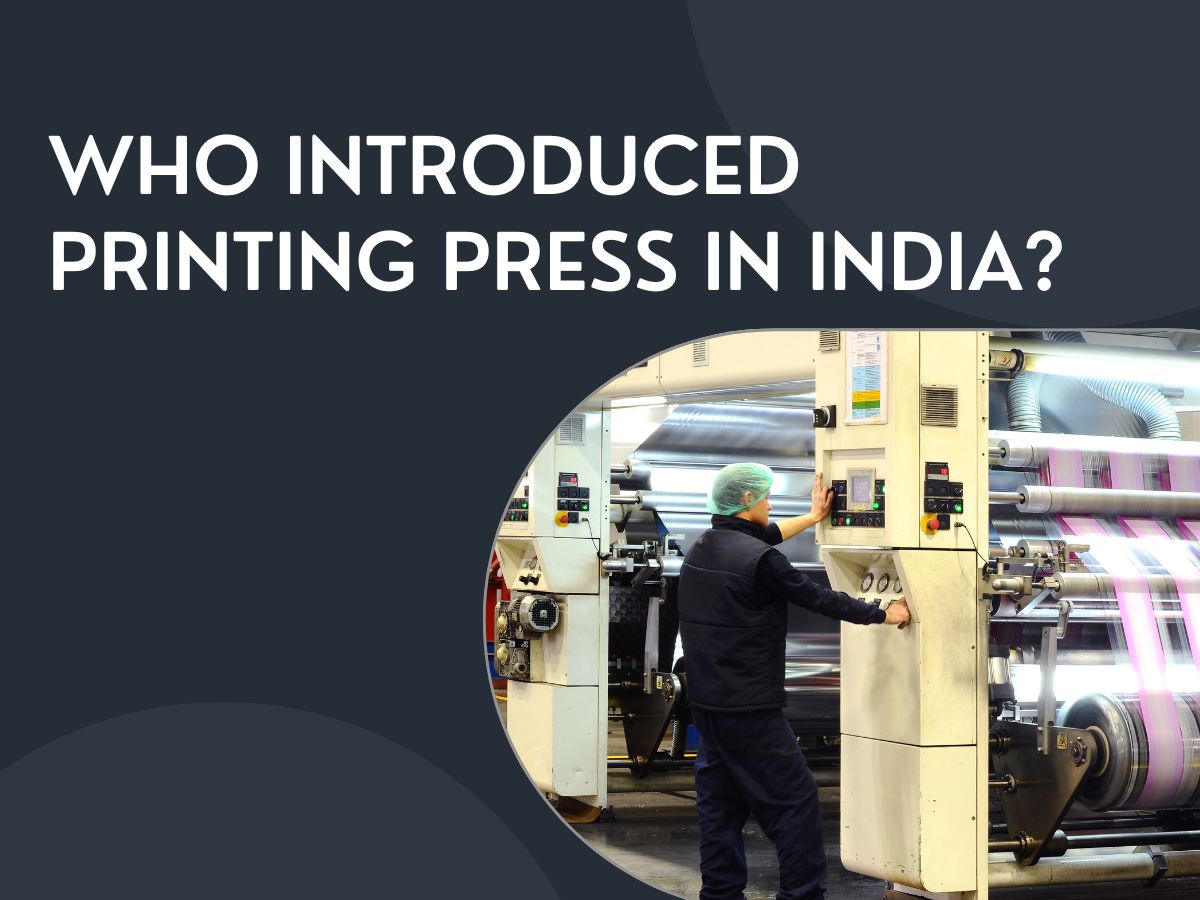Who Introduced The Printing Press In India?

The printing press had an essential part in Indian history. The printing press facilitates the bulk distribution of standardized printed materials.
There is no documentation concerning the first printing press. But during the first millennium A.D., China produced the earliest known written text.
Europe did not acquire the printing press until 150 years after its introduction in China. In 1440, goldsmith and inventor Johannes Gutenberg began experimenting with printing in Strasbourg, France. He was a Mainz, Germany, political refugee.
Later, he returned to Mainz, where he had the Gutenberg press ready for commercial use by 1450.
The emergence of the Printing Press in India
The first Indian printing press was established in 1556 at St. Paul's College in Goa. Father Gasper Caleza mentioned in a letter to St. Ignatius of Loyola dated April 30, 1556, that a ship carrying a printing press would travel from Portugal to Abyssinia (modern-day Ethiopia) to boost missionary activity in Abyssinia.
Due to certain conditions, it was forbidden for this printing press to leave India. As a result, Joao De Bustamante initiated printing activities in Goa in 1556.
A professional printer and his Indian assistant were dispatched to follow the printing press and begin operating it. The first printed publications in India were not books but theses called Conclusoes, which were loose sheets presenting disputed issues among people in St. Paul's College priesthood training.
First Publication of Books in India
Conclusiones Philosophicas was the initial book to be published. Five years after the demise of its poet, Saint Francis Xavier, the printing press released its second book, Catecismo da Doctrina Christ, the following year.
Printing of Colóquios dos simples e drogas by Garcia da Orta he cousas medicinais da Índia, by Joao de Endem in 1563. The oldest surviving printed book in India is Gaspar Jorge de Leo Pereira's Compendio Spiritual Da Vide Christaa (Spiritual Compendium of the Christian Life).
Printing of Indian Script
Joao Gonsalves is credited with creating the first Indian Script-Tamil printing. He was another Spaniard who contributed significantly to the development of printing in India.
Tamil: Doctrina Chrstam, Tampiran Vanakkam was the first Indian language printed in 1558 on paper imported from China; it was a 1539 Portuguese translation of the Catechism (the first Tamil book in Romanized Tamil script was printed in Lisbon in 1554.)
On October 20, 1578, the Jesuit Father printed Kerala's first Indian language book. In 1602, the Jesuits constructed a Chaldean (Syriac) printing press in Vaipincota, near Cochin.
Goa continues to utilize Latin-styled Konkani letters. In different linguistic regions, Konkani has been written using similar scripts. The Portuguese appear to have viewed the Roman script in Goa as more advantageous for their political rule and colony surveillance.
According to reports, Portuguese printers deemed the Konkani alphabet to have an "uncouth shape" and the Kannada characters to be "cumbersome."
Thomas Stephen, a Jesuit from England, came to Goa in 1579. He is accountable for the expansion of Konkani literature. Purana Christda (Kristu Purana - Life of Christ) was written in the Marathi language and is regarded as a Marathi classic.
It was fashioned after the Hindu epic Ramayana (Amazon). This was the first book published in 1616 by the Rachol Seminary Press.
Jardim de Pastores by Miguel de Almaida, printed in Goa between 1658 and 1659, was an important Konkani book. During the 17th century, over forty publications on religious topics were written in Goa in Portuguese.
PJ Thomas said significant printing in Tamil and Malayalam was conducted at Ambalakad after 1663. In 1670, the Ambalakad press was printing Padre De Nobili's works.
Padri Paulino stated that Ejnasi Aichamoni, a Malayalee who prepared a Malayalam lexicon for printing in 1679, printed the dictionary and made all previous attempts to print it.
There is evidence that the first publication of a Malayali script book occurred in the second half of the same century. The Ambalakad press operated before Tipu Sultan's takeover of Kerala. The church and seminary were destroyed in the attack.
It wasn't until Bartholomeus Zegenbel, a Danish missionary, came to Tharangambari in 1706 that printing in India had a chance to flourish again. A printing press arrived in 1712 or 1713, and Tranquebar Press issued its first publication.
At Zegenbalg's request, the first Tamil publication from the press was meticulously documented in 1713, followed by the New Testament in 1714.
Printing Press after 19th-century
In the second decade of the 1800s, the Calcutta Book Society performed exceptional work in publishing by reprinting European-printed science textbooks. Baptists claim to have printed 710,000 schoolbooks in several regional languages in Calcutta alone by 1820.
In 1857, there came an abrupt recognition of the significance of the printed word for the urban commoner. Only print could facilitate the interchange of ideas between communities in different regions of the country.
The British had a vested interest in boosting education in the country to train a substantial portion of the urban populace as "white-collar babus."
Both objectives promoted printing and publishing in diverse regions of the country.
In the pre-independence era, organizations such as Higinbotham's in Madras in 1844, Nawal Kishore Press in Lucknow in 1858, DB Taraporevala Sons in Bombay in 1864, AH Wheeler & Co in Allahabad in 1877, Indian Press in Allahabad in 1884, IMH Press in Delhi in 1885, and Gowarsons Publishers in 1888 were instrumental in promoting professional printing and publishing.
Printing Press in 20th-Century
During the first three decades of 1900, numerous publishing houses established themselves. They were involved in producing and publishing school and college textbooks, religious books, books on literature, and newly authored novels in several regional languages inspired by national emotion.
If you are looking for any printing related services in your city then Finndit.Com will give you a list of the best ones in your city.
